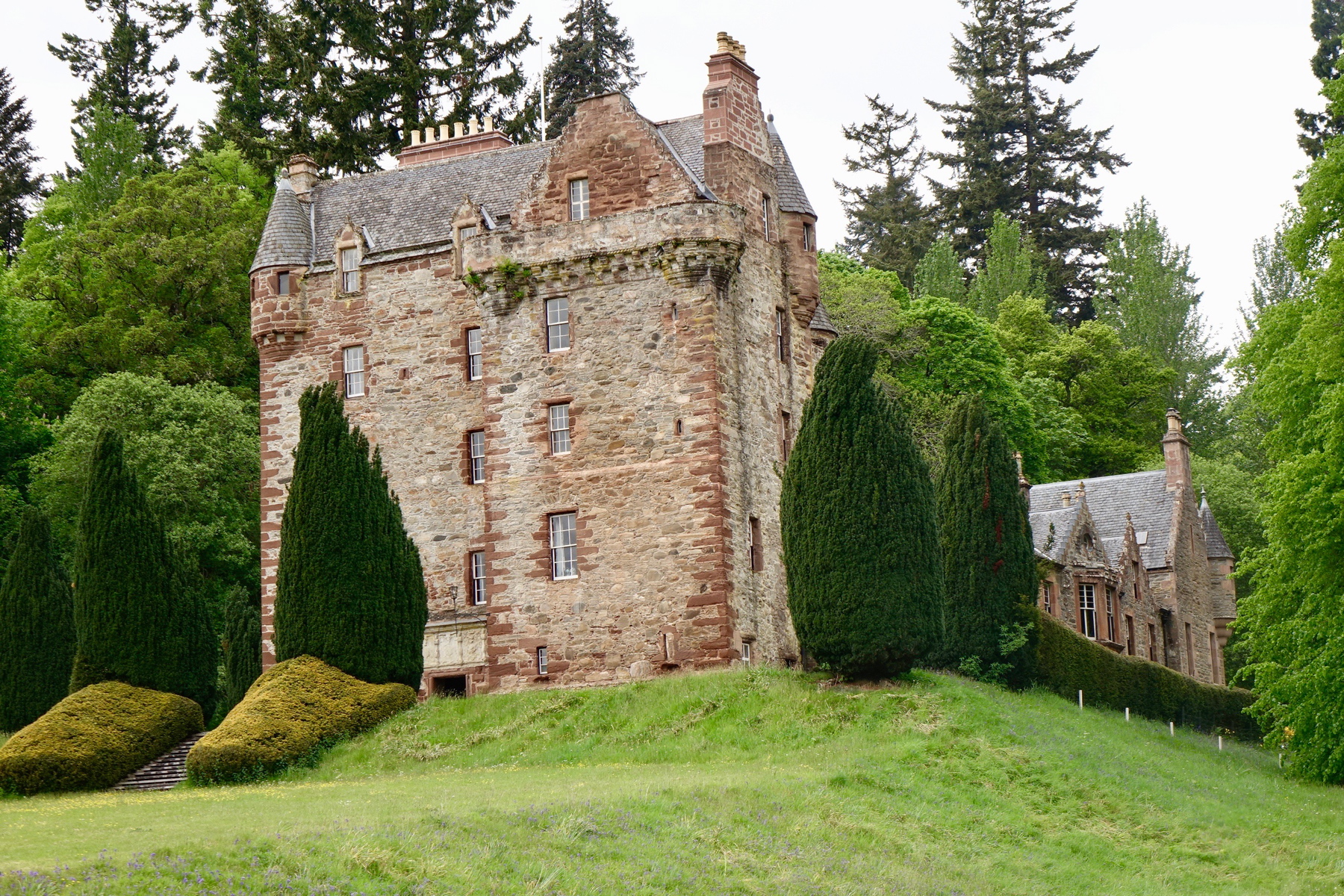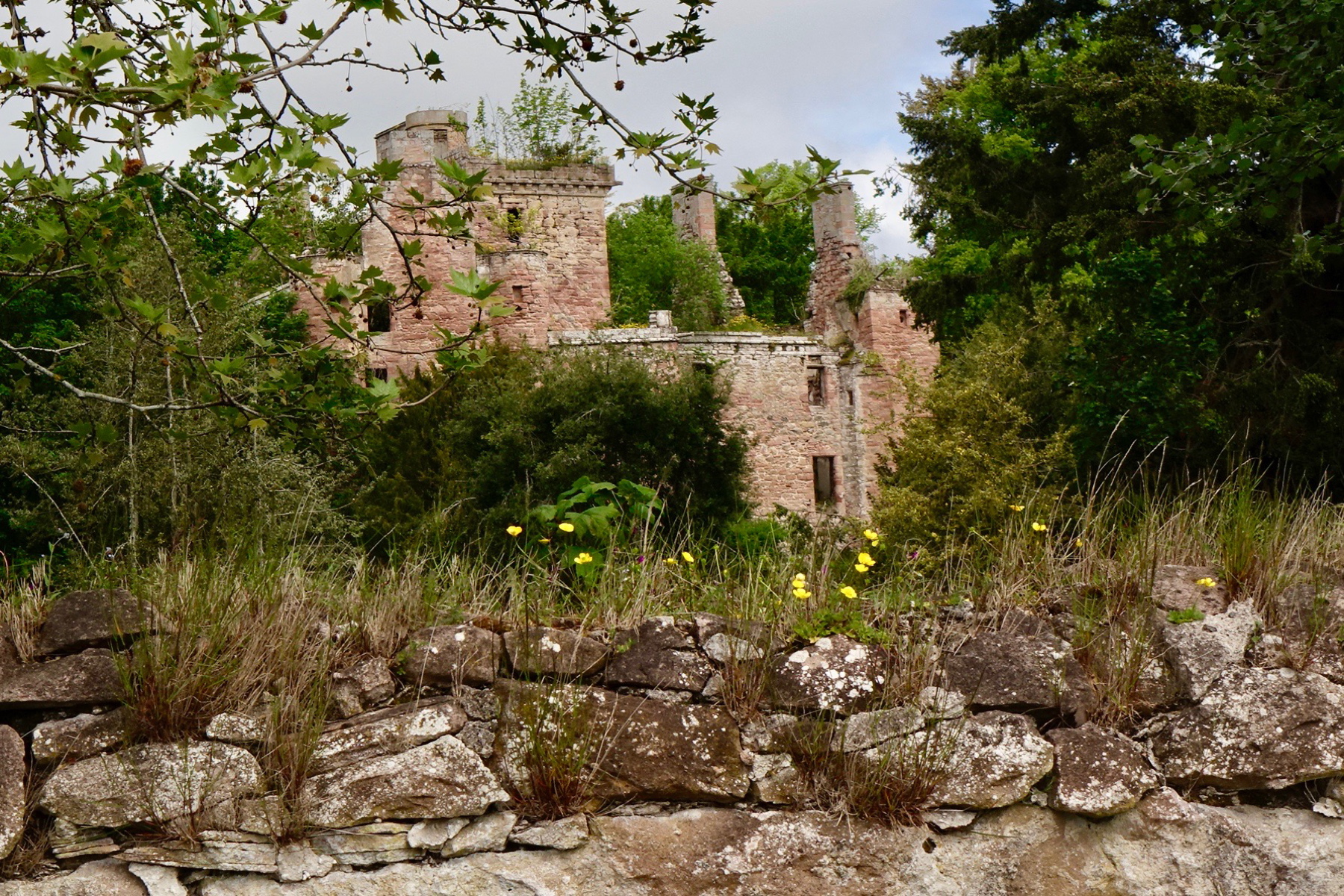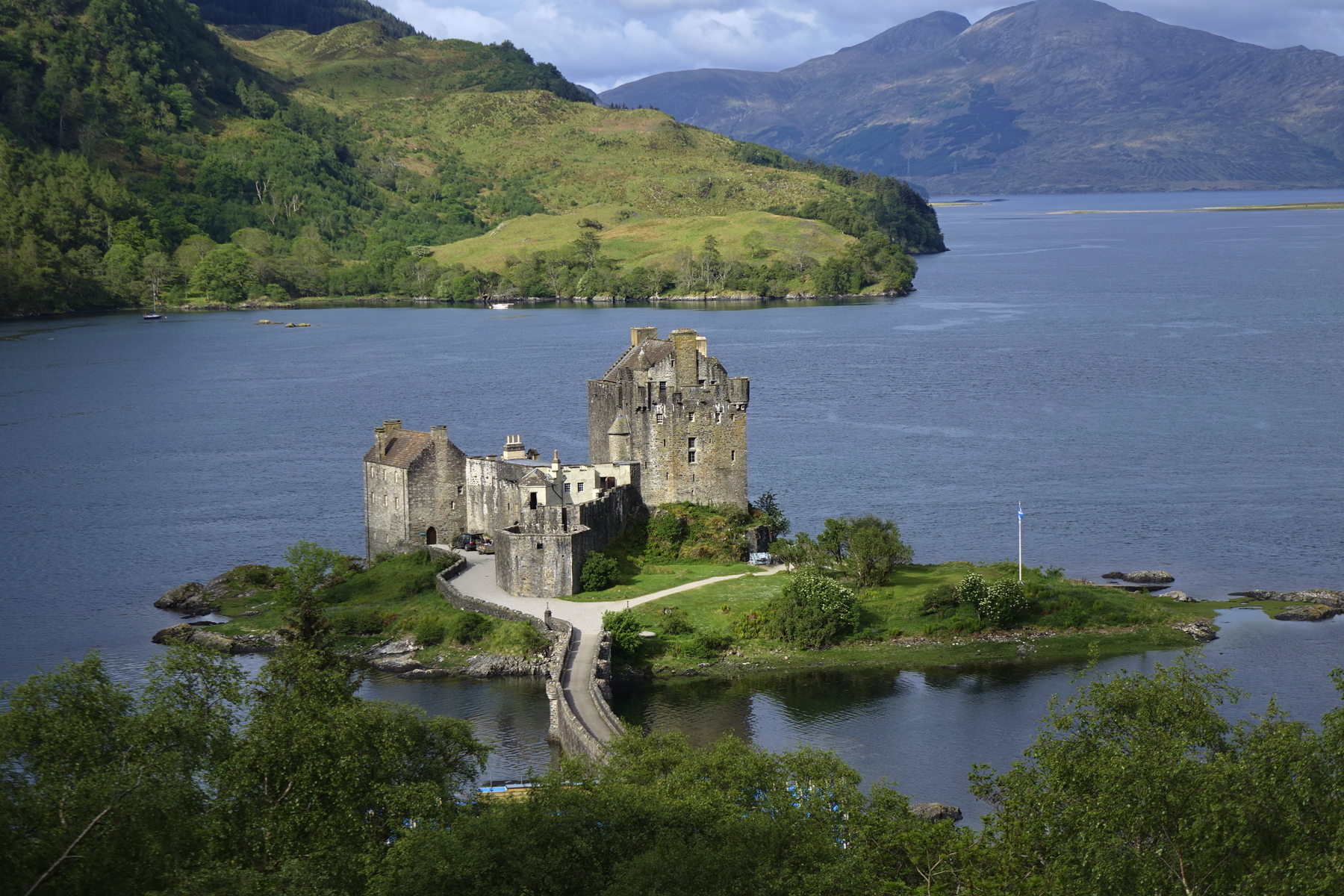
Castle Leod
I trembled with excitement the day we visited Castle Leod, the Clan Mackenzie seat, located near the village of Strathpeffer in the east Ross Shire of the Highlands. In the Mackenzie’s’ hands for centuries, Leod remains one of the few castles where the original owners family descendants still live.
“For 500 years Leod was backdrop of the Mackenzie family whose dramatic and colorful lives were inextricably linked with the great events of Scottish history and the characters that shaped it, among them Queen Mary of Scots and Prince Charles Edward Stuart.”
Man lived on this land for centuries. An Iron Age vitrified fort can be seen on the hills of the Castle as well as Pictish Standing Stones.
After the Battle of Harlaw in 1411, the Mackenzie’s power expanded from the barren west coast of Kintail in Wester Ross to the fertile lands of Eastern Ross. Before the 12century,they built a crannog, a fortified stone hut, on the site.
After Mary Queen of Scots officially granted the land to the Mackenzie’s, John of Killen became the first Clan Chief to live in Castle Leod. By the late 15th century the tower looked much like it does today with further alterations. The Mackenzie’s currently live in the addition on the back wing.
Leod was also the inspiration behind Castle Leoch the seat and home of laird Mackenzie in Diana Gabaldon’s fictional series Outlander.

Castle Leod
Castle Leod, open only a few days a year, has a less imposing stature and a more intimate feel. My heart skipped as we walked up the long, tree-lined avenue to the castle. Above the front door, I admired the marriage stone dating from 1605 commemorating the union of Margaret MacLeod with Sir Rory Mackenzie famous ‘Tutor of Kintail.
Imagine my surprise when we opened the door and our clan chief John Mackenzie, 5th Earl of Cromartie, welcomed us as warmly as banquet guests. He showed us the sword rack and a tapestry of the Mackenzie family tree, and then led us to a stone stairwell to the Great Hall.
“The fireplace, still used today, and the frieze above it are originals,” a guide, explained. “Of course, the wood replaced the straw floor used back in the day.”
Decorated with Regency period furniture, cabinets held family heirlooms – letters, jewelry, medals and other memorabilia. Paintings of former clan leaders hung on the walls.
“Be sure to notice the a prie-dieu, (praying table) a gift from Mary Queen of Scots,” the guide said pointing to a 2-foot- high, structure with 2 pillars, “ Unfortunately no one has figured out how you could actually use it to pray.”
Off of the Great Hall, an Edwardian style Billiard Room, contained its original wooden pool table. The room also holds century old books crumbling behind the glass-enclosed bookshelves. A map on the wall of the estate surveyed by John Leslie in 1763 remains accurate still today.
A narrow staircase wound around to the ground floor to a hall with servant’s bells and speaking tubes. Off of this, steps lowered to a tiny dungeon at one end and to a large vaulted kitchen in the other.
“My father used this as a wine cellar,” John wrote, “but by the time I inherited the estate the only thing left down here was ghosts.”
Like every good castle, Leod too has ghosts. Footsteps of the chief ghost, The Night Watchman, can be heard wandering guarding inhabitants. The Sad Ghost haunts the dungeon. After dark, soldier ghosts eerily hover at the front door. Perhaps, they date back to the time the castle was confiscated after George; The 3rd Earl of Cromartie’s fought for the Jacobites in the Rebellion.

Spanish Chestnut planted 1553, oldest tree in the UK
The castle’s gardens held natural treasures like the giant sequoia, the largest tree in the UK. Two ancient Spanish chestnut trees, planted in 1553 commemorated Queen Mary of Scot’s land grant, remain the oldest trees in Britain. On part of the estate’s extensive parkland, bordered by the Peffery River, prizewinning Aberdeen Angus cattle graze.
In previous centuries, the Highland Clan leaders held power over life or death. The Hanging Tree for male prisoners stood in front of the castle and to one side was the Drowning Pond, where female criminals met their fate.

Clan Chief John Mackenzie with the author
Today it is hard to imagine our present clan chief John Mackenzie wishing anyone ill will. Before we left, he graciously agreed to pose for a picture with me. With good cheer and humility, he even grinned for the camera. But my smile was even greater for this special moment will be etched in my family’s archives forever.








 Ever since I found out that my paternal lineage goes back to the 12th century Clan Mackenzie, I dreamed of following their trail from Eilean Donan Castle on the west coast across the Scottish Highlands and the Kintail mountains to Castle Leod on the eastern shores.
Ever since I found out that my paternal lineage goes back to the 12th century Clan Mackenzie, I dreamed of following their trail from Eilean Donan Castle on the west coast across the Scottish Highlands and the Kintail mountains to Castle Leod on the eastern shores. Mackenzie’s, once the strongest clan in the north of Scotland, reigned for centuries. From rich, warlords to cash strapped landlords, their story portrays the end of the clan system as fortunes changed hands after the Highland Clearances. Their lives were as rugged as the lands they ruled. Filled with craggy inlets, mist-covered mountains, and broody glens, their land lends way to legends.
Mackenzie’s, once the strongest clan in the north of Scotland, reigned for centuries. From rich, warlords to cash strapped landlords, their story portrays the end of the clan system as fortunes changed hands after the Highland Clearances. Their lives were as rugged as the lands they ruled. Filled with craggy inlets, mist-covered mountains, and broody glens, their land lends way to legends.






